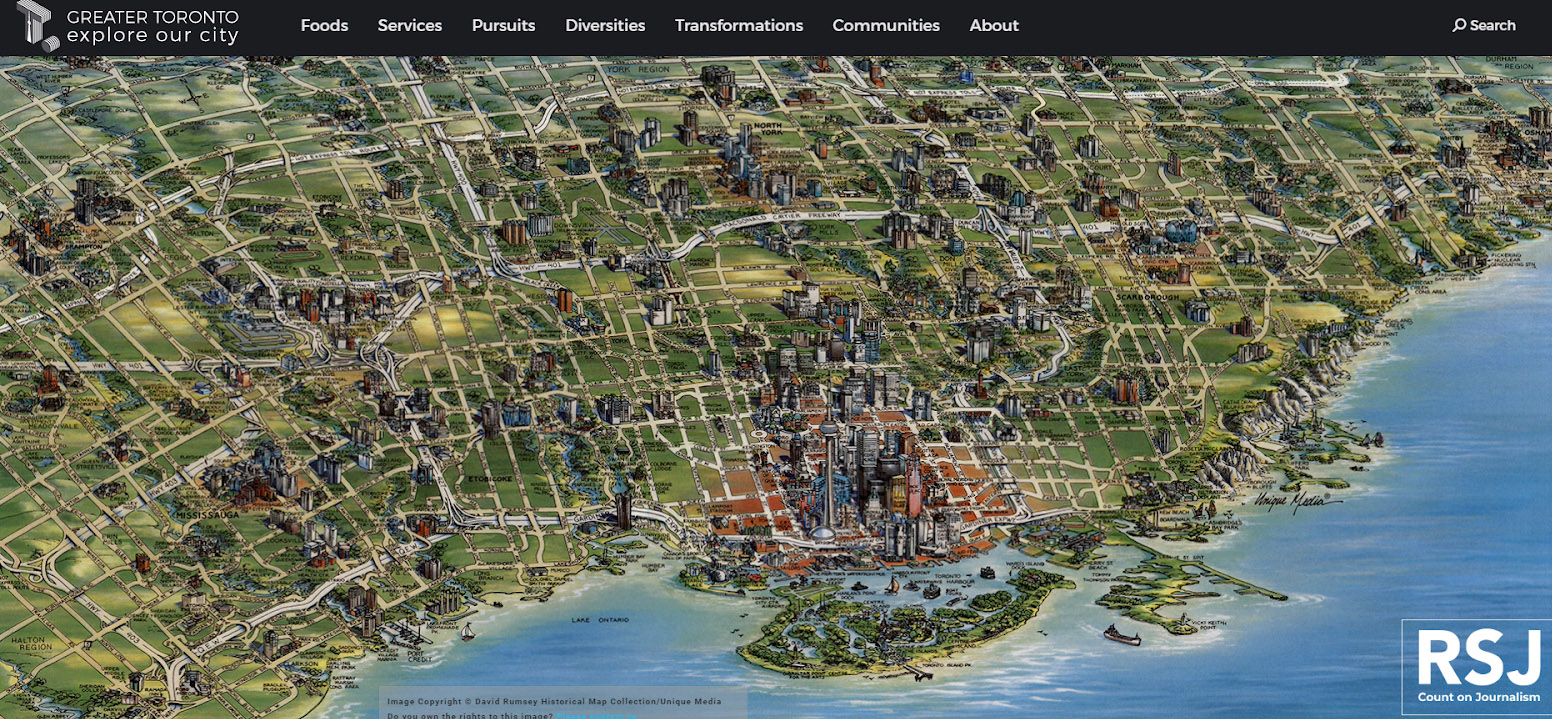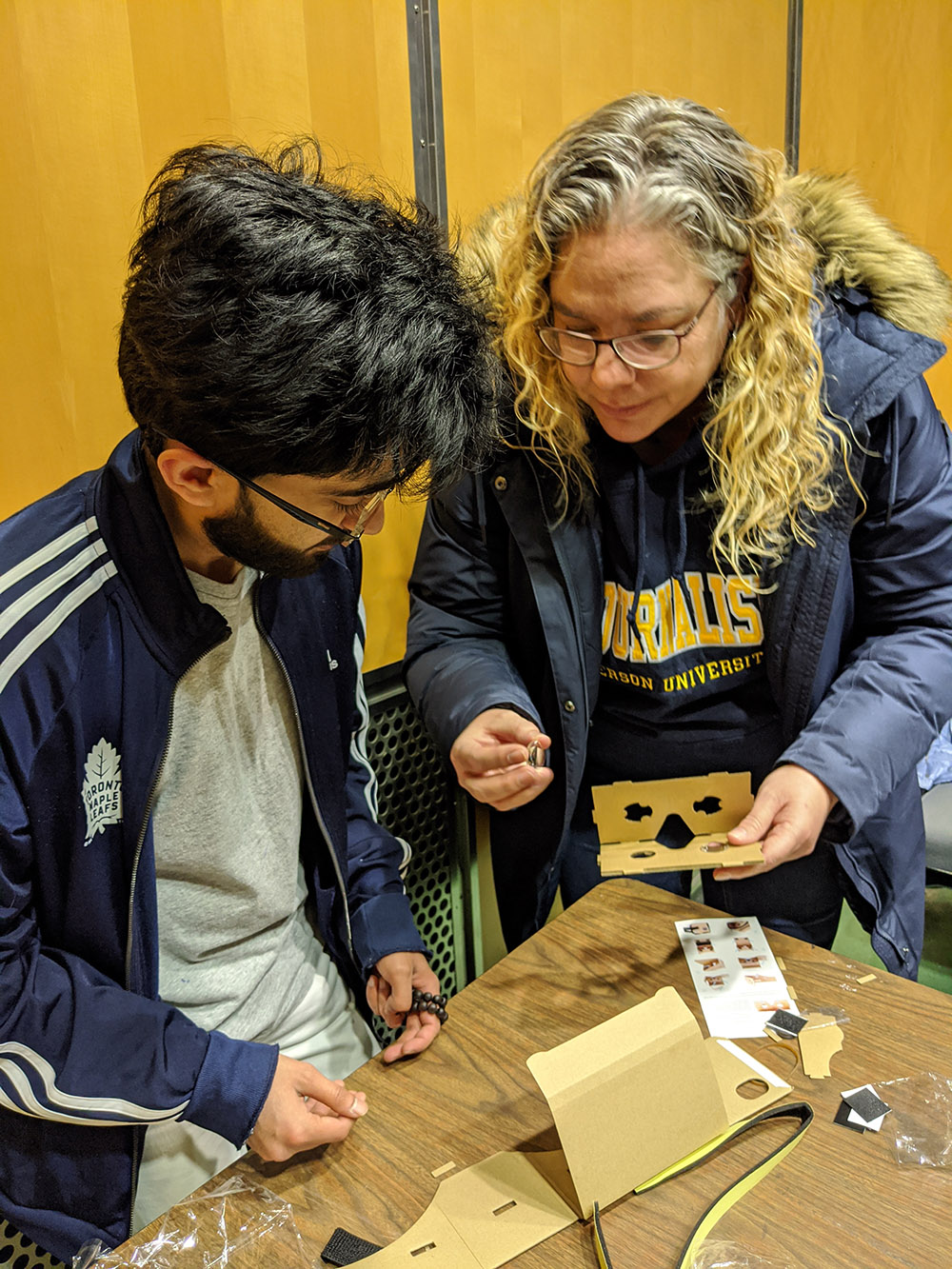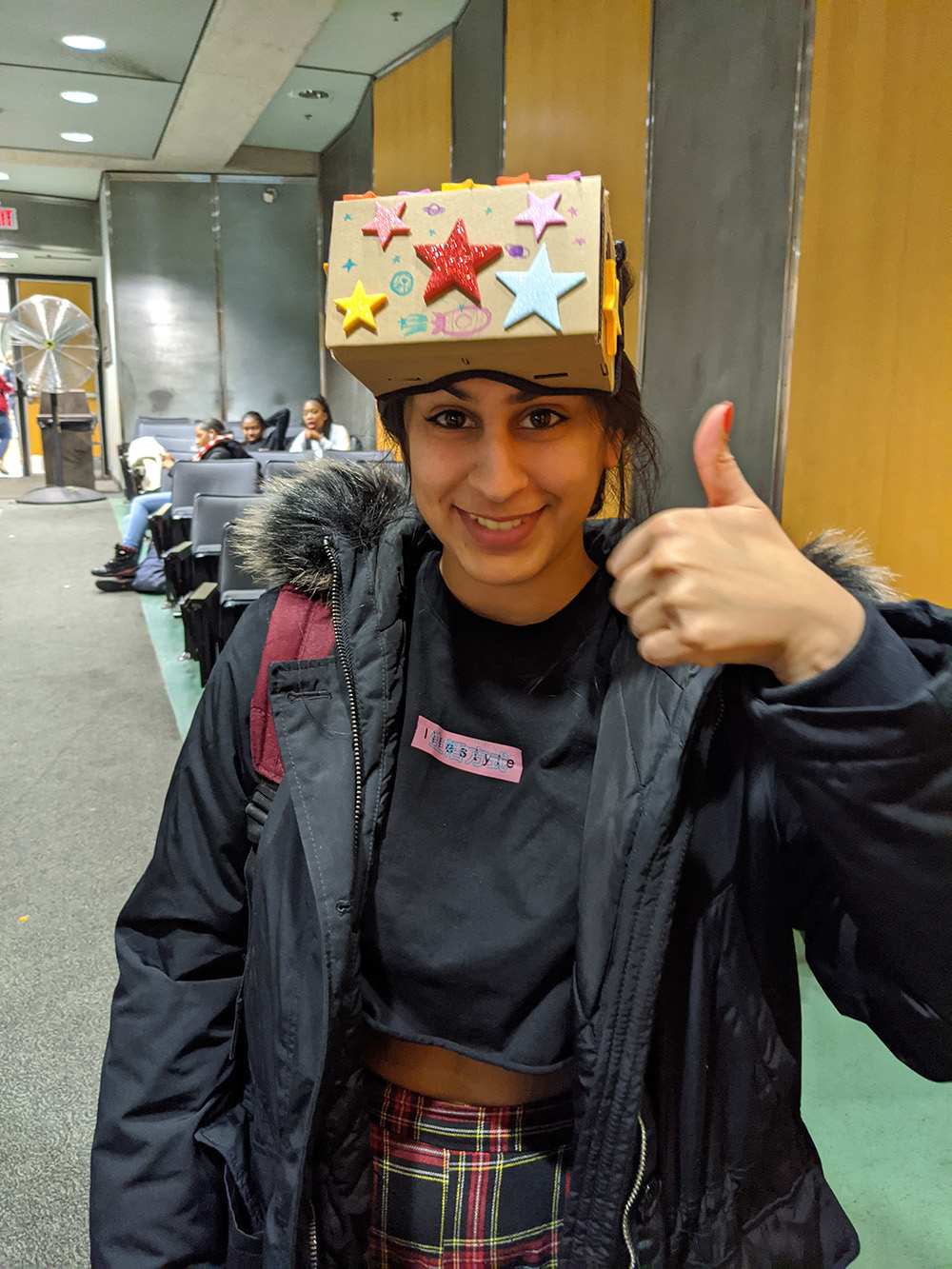Project T. makes its mark in second-year

From a roller rink (external link) in Mississauga, a community gift store (external link) in Little Italy, to a rescue specialist (external link) in Pickering, Project T. (external link) (pronounced “t dot”) is bringing the stories of people and places in the Greater Toronto Area to your screen in a creative immersive format.
“We have a thriving diversity that's often looked to as one of the most exciting, culturally diverse cities in the world,” said Ivor Shapiro, instructor. “(Project T.) just sets people, places and things in the city in context by really taking advantage of the feature writing form, and the multimedia possibilities of visiting a place before you’ve even stepped out of the door.”
This is the second year for Project T., the product of a restructuring of the JRN 272 (Feature Writing and Current Affairs) and JRN 273 (Boosting Media Techniques) combined winter courses for second-year journalism students, taught by Shapiro and Cheryl Vallender.
The articles from this semester were published beginning on April 14 and more are being added, with the website garnering over 13,000 views during the initial week. Two student volunteers are organizing the specific locations of each story on a map that will be uploaded to the website in the near future, according to Vallender.
“It’s just been such a collaboration with everybody, the coaches, the TAs, the students, Lindsay (Hanna),” said Vallender. “Everybody has just brought it to life, which is so amazing. It's been such a fun project to work on.”
Developments in year two
Building upon feedback from last year, Project T. has developed into a fully-fledged publication with its own style guide, even inviting RSJ students from outside the courses to pitch. Now a sister publication to the Ryersonian, it focuses on GTA neighbourhoods outside of Toronto Centre, including this year outer parts of the GTA by popular demand.
For some students, this is their second time publishing on Project T. Some JRN 270 (Producing the News) features from last fall were published in February, expanding upon last year’s stories.
Professional writing coaches and media teaching assistants supported students in each lab as they worked on their PPTs (person, place or thing).
“It's such a cool and unique experience to work with these people in the industry and have them giving back positive feedback and pointers that you can work towards,” said student Dorsa Rahbar. “I feel really lucky to have that, especially because this was one of my first published pieces.”
Some students had to pivot their stories and assignments were altered when COVID-19 brought in-person activities to a halt. The biggest missed assignment was the 360 degree video, which would have involved teams of four doing a walking tour together of their community (ThingLink, an interactive panorama, was offered as an alternative).
Shapiro received exemplary feedback from writing coaches about the students’ work ethics, and said that they have all been “blown away.” He was amazed at how they all were able to complete the assignments given the pandemic.
“It's just incredible,” said Shapiro. “We have students scattered all over this country, this continent and the world, finishing their stories for T. this week, because they want to, and not one of them has asked for a break.”
Stories with connections
For some, having a connection to their story was a big motivator.
Rahbar admits that she is introverted, so getting very close and personal with a subject seemed daunting at first. She decided on a more comfortable approach by exploring her Persian roots through Venus Bakery and Café in Scarborough. (external link)
Walking in, she immediately felt welcomed, and she captured the sounds of that atmosphere through audio clips embedded within the text.
“I really wanted to capture what it feels like going into this small, homey bakery,” said Rahbar. “The first time I walked into that space, I felt right away like I've been here my whole life, as cliched as it sounds.”
In an infographic, she provided a guide to Middle-Eastern pastries for people who do not know them.
“That was definitely a challenge that I did have in the beginning, to try not to make it relatable to me, but relatable to the audience,” said Rahbar. “And I hope I achieved that.”
Jael Joseph, a mature student from Dominica, featured (external link) New Haven Funeral Home in Mississauga, founded by two black women.
Like Rahbar, Joseph was looking for a story she could connect with. After reading a short article about the home on By Blacks, an African-Canadian magazine, she thought there might be an opportunity to take the story to the next level.
At first, she struggled about whether to continue with the idea, since she had lost her own parents in 2011.
“It was very difficult putting this together, but I felt I had a responsibility, based on the information I had gathered, to represent my people,” said Joseph.
Joseph recalls being amazed by the vivid stories she heard from her sources. She kept the funeral tone in her photos by making them black and white, while colourizing a single aspect for impact.
As part of the social media plan assignment, she shared the story widely online. Joseph received an overwhelming response, waking up to over a hundred messages the day after she published.
“The fact that I did a black business good — they were represented as they want to be represented — that made me really feel good,” said Joseph.
A rewarding experience
Students can view the analytics of their online pieces to understand their reach across the world.
“I had a student say he would have been happy if 20 people had seen his story… he's got over 200 now,” said Vallender. “I think that that's been really quite exciting for people to see, that their stories are being read and they're being accessed.”
Joseph’s heart is in radio, and she never saw herself as a writer before this semester.
“I realized that I do have a very good imagination and I can really put things together, but I just needed to take a moment to actually put it together… because I always think about the end before I can think about the process,” said Joseph.
The number of staggered assignments seemed like a lot to Joseph while she was doing them, but found the benefit when putting all the elements together in the end, and suggests that students “trust the process.”
“(The courses) really opened up my eyes a lot… the experience, with its ups and downs, was challenging, but it was a really good experience.”
As for Shapiro, this was his final year teaching, as he heads into his final sabbatical and then retires.
“It has been the best semester of my career,” he said. “I've been teaching at Ryerson for 20 years, and I would say of my whole career — even pre-Ryerson, even not teaching — I've never had as much reward and challenge as I've had this semester. It was a gift to me.”


One fun activity students did was create cardboard virtual reality goggles for viewing 360 degree videos. (Cheryl Vallender/RSJ).